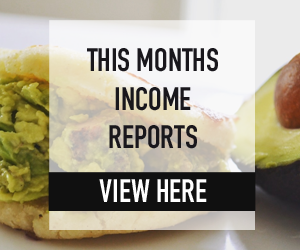Colombia is known for its rich and diverse flora, with thousands of plant species found only in this country. And among these botanical treasures are an array of delicious and exotic fruits that are not only a delight to the taste buds but also a source of pride for Colombians. If you’re a foreigner living in Colombia, why not bring some of its tropical charm into your own backyard by planting some of these top 10 Colombian fruit trees? In this blog post, we’ll introduce you to these delectable fruits and teach you how to grow them in your own backyard.
What makes Colombian fruits unique?
Colombia’s geographical location, diverse climate, and fertile soils provide the perfect conditions for an abundance of fruit trees to thrive. These fruits are not only unique in their taste but also in their appearance, with vibrant colors and unusual shapes that make them stand out from your typical grocery store fruits. Additionally, many of these fruits are not commonly found outside of Colombia, making them a special treat for foreigners.
How to grow Colombian fruit trees in your backyard
Before we delve into the top 10 Colombian fruit trees, it’s important to understand the basics of growing fruit trees in your backyard. Here are some general tips to keep in mind:
- Choose a sunny spot: Most fruit trees require at least 6-8 hours of sunlight per day to thrive.
- Prepare the soil: Colombian fruit trees prefer well-drained, fertile soil with a pH of 6.0-6.5.
- Water regularly: Fruit trees need consistent watering, especially during the first couple of years after planting.
- Prune and fertilize: Pruning helps promote healthy growth and fruit production, while fertilizing provides essential nutrients for the tree.
- Be patient: It can take a few years for fruit trees to start bearing fruit, so be patient and continue to care for your tree.
Now, onto the top 10 Colombian fruit trees!
1. Guanabana (Soursop)
Guanabana, also known as soursop, is a large fruit with a distinctive heart-shaped appearance and a prickly green skin. Its white, creamy flesh is sweet and tangy, often used in juices, ice creams, and other desserts. This tree requires a warm, humid climate and can grow up to 30 feet in height.
2. Maracuya (Passion Fruit)
Maracuya, or passion fruit, is a small, round fruit with a purple skin and juicy, tangy pulp filled with edible seeds. It is commonly used in juices, cocktails, and desserts. This tree prefers a warm, humid climate and can grow up to 20 feet tall.
3. Lulo (Naranjilla)
Lulo, also known as naranjilla, is a small, round fruit with a bright orange skin and acidic, citrusy flavor. It is often used in juices and desserts. This tree grows best in a cool, moist climate and can reach heights of up to 10 feet.
4. Mamoncillo (Spanish Lime)
Mamoncillo, or Spanish lime, is a small, round fruit with a thin green skin and a tart, juicy pulp surrounding a large seed. It is commonly eaten fresh or used in jams and jellies. This tree can grow up to 40 feet tall and thrives in warm, humid climates.
5. Borojo (Bursera Simaruba)
Borojo is a large, brown fruit with a hard exterior and a creamy, sweet pulp inside. It is often used in juices and smoothies and is known for its high nutritional value. This tree can grow up to 50 feet tall and prefers a warm, humid climate.
6. Mamey (Sapote)
Mamey, also known as sapote, is a large, oval-shaped fruit with a rough, brown skin and a sweet, creamy pulp. It is commonly used in desserts and ice creams. This tree can grow up to 100 feet tall and thrives in warm, humid climates.
7. Granadilla (Sweet Granadilla)
Granadilla, or sweet granadilla, is a small, round fruit with a purple skin and a sweet, juicy pulp filled with edible seeds. It is often used in juices and desserts. This tree can grow up to 10 feet tall and prefers a warm, humid climate.
8. Chontaduro (Bactris Gasipaes)
Chontaduro, or bactris gasipaes, is a large, football-shaped fruit with a hard, scaly exterior and a soft, creamy pulp inside. It is commonly used in traditional Colombian dishes and is known for its high nutritional value. This tree can grow up to 50 feet tall and thrives in warm, humid climates.
9. Uchuva (Goldenberry)
Uchuva, also known as goldenberry, is a small, round fruit with a bright orange skin and a tart, sweet flavor. It is often used in jams, jellies, and desserts. This tree can grow up to 6 feet tall and prefers a cool, moist climate.
10. Zapote (Mamey Sapote)
Zapote, also known as mamey sapote, is a large, oval-shaped fruit with a rough, brown skin and a sweet, creamy pulp. It is commonly used in juices and desserts. This tree can grow up to 100 feet tall and thrives in warm, humid climates.
Other ways people asked this question
- What are the most common Colombian fruit trees?
- How can I grow Colombian fruit trees in my backyard?
- What are some unique fruits found in Colombia?
- What are the best tropical fruits to grow in Colombia?
- Why are Colombian fruits so special?
Colomb















